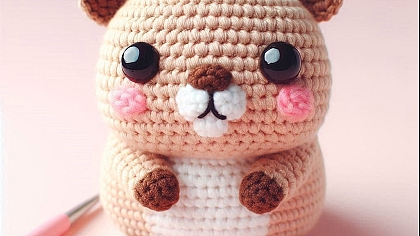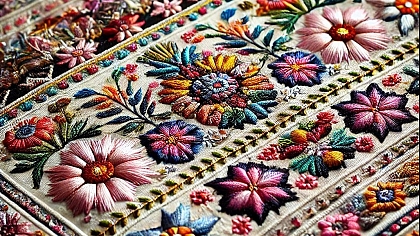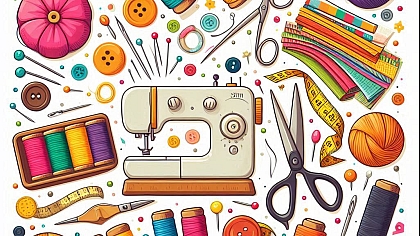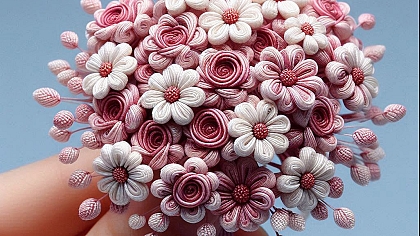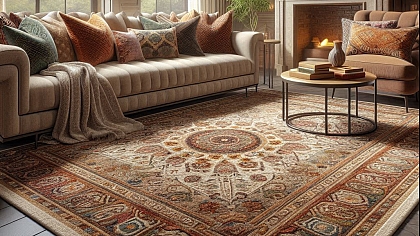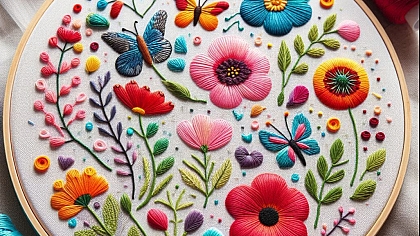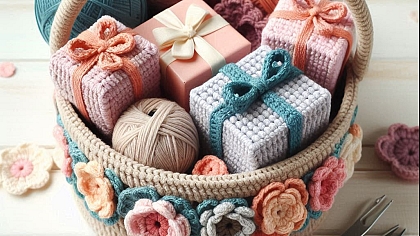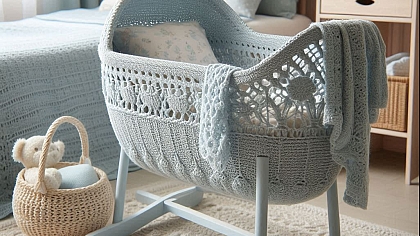
DIY Weaving Projects: Creative Ideas for Home Décor
Weaving is an ancient craft that has stood the test of time, finding relevance and innovation in modern home decor. Engaging in DIY weaving projects not only allows for the creation of personalized decor but also brings a sense of fulfillment and creativity to the home. This article explores various weaving techniques and projects, offering detailed guidance to transform your living space with handmade beauty.
The Art of Weaving: A Historical Perspective
Before diving into specific projects, it’s essential to appreciate the rich history of weaving. Weaving dates back to prehistoric times, with the earliest examples found in ancient Egypt and Peru. These early weavers used natural fibers like flax, wool, and cotton, creating both functional and decorative textiles. Over the centuries, weaving techniques have evolved, with each culture contributing unique patterns and methods. Today, modern weavers blend these traditional techniques with contemporary designs, resulting in a diverse array of styles and possibilities.
Tools and Materials: Setting Up Your Weaving Space
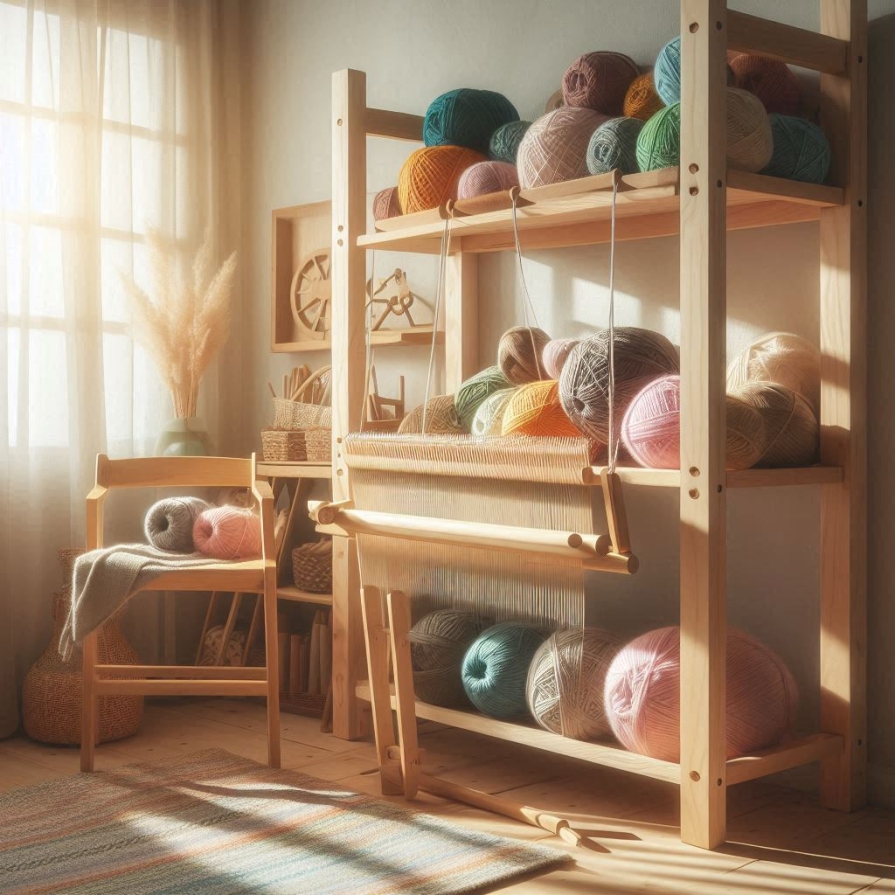
Embarking on a weaving project requires some basic tools and materials. A loom is the primary tool, and while large floor looms can be expensive and space-consuming, small tabletop looms or even homemade cardboard looms can be perfect for beginners. Yarn is the most common material used, and it comes in various types such as wool, cotton, and synthetic blends. Other essential tools include a shuttle for passing the weft thread through the warp, a heddle to lift the warp threads, and a beater to pack the weft threads tightly.
Creating a dedicated weaving space is also beneficial. This could be a corner of a room where your loom, yarn, and tools are easily accessible. Good lighting is crucial to see the intricate details of your work, and a comfortable chair will make long hours of weaving more enjoyable. Once your space is set up, you are ready to explore various DIY weaving projects.
Wall Hangings: Adding Texture and Interest to Your Walls
Wall hangings are one of the most popular DIY weaving projects, offering endless possibilities for creativity. To start, choose a simple design with straight lines and minimal color changes. As you gain confidence, experiment with different patterns and textures.
Begin by setting up your warp threads on the loom, ensuring they are evenly spaced and taut. Select a weft thread that contrasts or complements the warp. Weave the weft thread over and under the warp threads, using a shuttle to guide it. To create interest, vary the thickness and texture of the yarn. For instance, incorporate chunky wool for a tactile effect or metallic threads for a touch of glamour. Adding fringe or tassels at the bottom of the hanging can also enhance its visual appeal.
To finish, carefully remove the weaving from the loom and secure the warp ends. Attach a wooden dowel or branch to the top for hanging. This simple yet striking project can transform any wall into a focal point, showcasing your craftsmanship.
Woven Pillow Covers: Cozy and Customizable
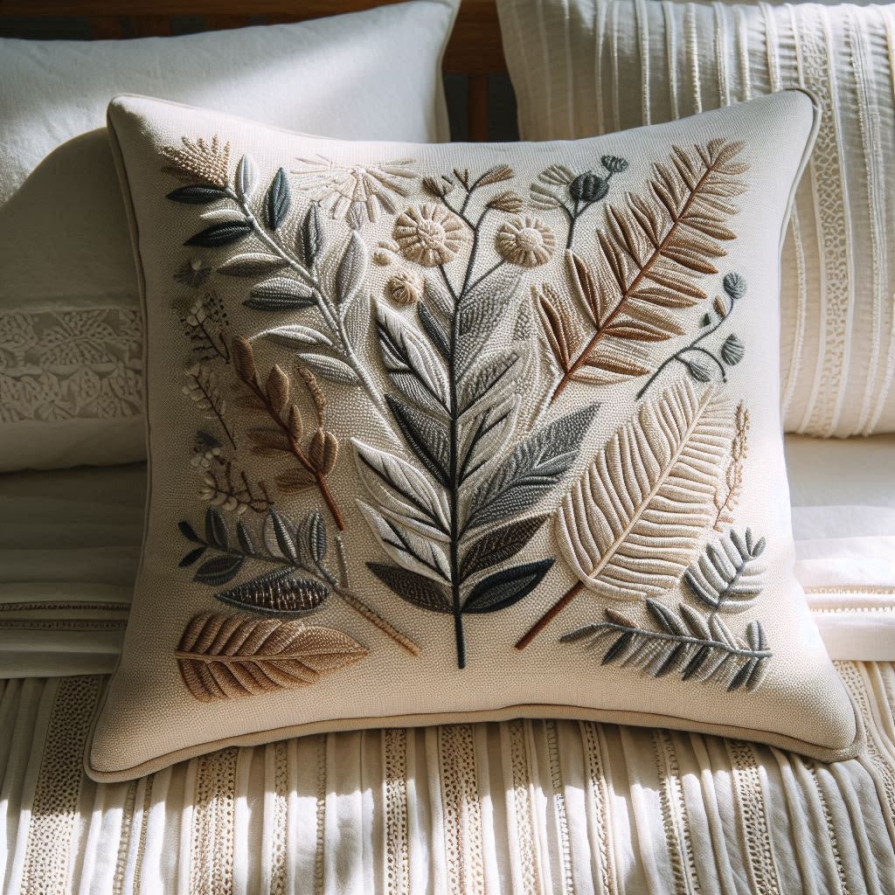
Pillow covers are another excellent DIY weaving project, allowing you to create unique and cozy additions to your home decor. Start with a smaller loom or even a lap loom, which is easy to handle and maneuver.
Choose soft, durable yarn for comfort and longevity. Set up the warp threads as you would for a wall hanging, but consider a tighter weave to ensure the pillow cover holds its shape. Weave the weft threads in your desired pattern, experimenting with different colors and textures. For a modern look, try geometric patterns or color blocking.
Once the weaving is complete, remove it from the loom and secure the edges. Sew the woven piece to a fabric backing, leaving one side open for inserting the pillow. Adding a zipper or buttons can provide a functional closure. These custom pillow covers can be easily changed with the seasons, offering a versatile and personal touch to your living space.
Table Runners: Elegance and Functionality
A woven table runner can add elegance and functionality to your dining or coffee table. This project requires a slightly larger loom, but the process is similar to that of wall hangings and pillow covers.
Choose a yarn that complements your table and room decor. Natural fibers like linen or cotton work well for table runners, as they are durable and easy to clean. Set up the warp threads, ensuring they are evenly spaced and taut. For a classic look, weave a simple pattern with neutral colors. For a more contemporary style, incorporate bold colors and patterns.
As you weave, pay attention to the edges, ensuring they are straight and even. This attention to detail will give your table runner a professional finish. Once complete, remove the weaving from the loom, secure the edges, and consider adding fringe or tassels to the ends for added flair. This functional piece not only protects your table but also enhances your dining experience with a handmade touch.
Woven Baskets: Practical and Decorative
Woven baskets are a versatile project that combines practicality with decoration. These baskets can be used for storage, as planters, or simply as decorative elements in any room. While this project may seem more complex, it’s manageable with a bit of patience and practice.
Begin by creating a base for your basket. This can be done on a round loom or by using a flat piece of cardboard with notches cut into it. Choose a sturdy yarn or rope for the base to ensure it holds its shape. Weave the weft thread around the base, gradually building up the sides of the basket.
To create different shapes and sizes, adjust the tension and spacing of the warp threads. For a more open weave, leave larger gaps between the threads; for a tighter weave, pack the threads closely together. Experiment with different patterns and colors to achieve your desired look.
Once the basket has reached the desired height, finish by securing the ends and trimming any excess yarn. Adding a handle or decorative elements like beads or tassels can enhance the basket’s aesthetic appeal. These woven baskets are not only functional but also add a handmade touch to your home decor.
Woven Rugs: Warmth and Style Underfoot
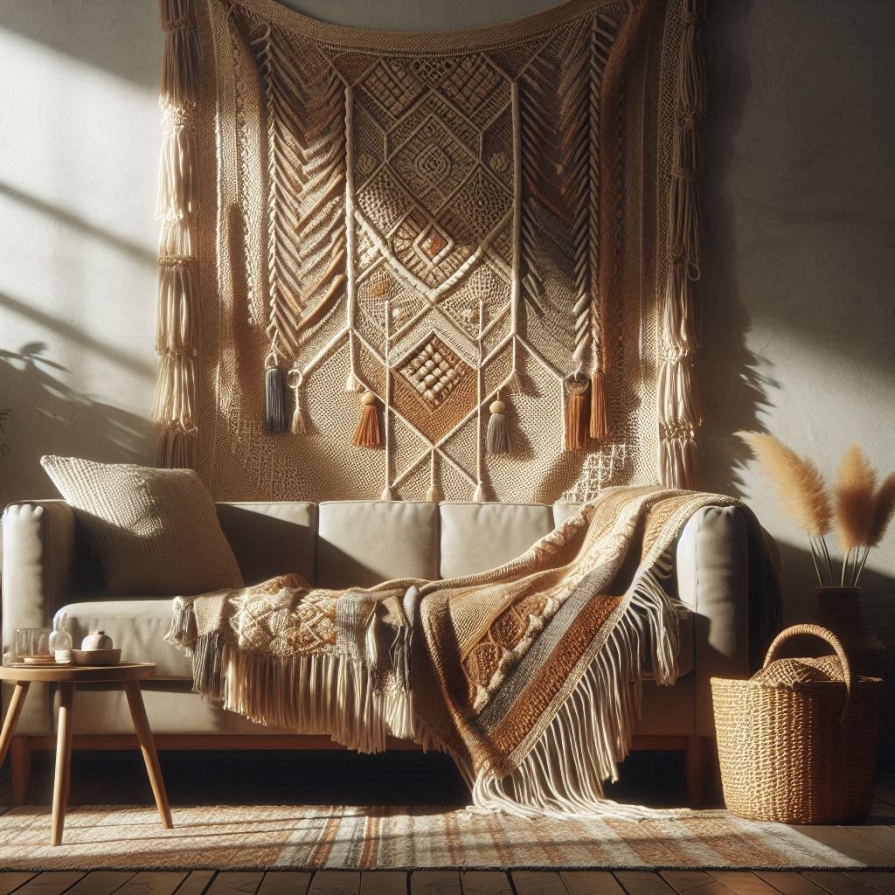
A woven rug can bring warmth and style to any room, providing a perfect canvas for your creativity. This project requires a larger loom and more yarn but follows the same basic principles as other weaving projects.
Choose a durable yarn, such as wool or a wool blend, which can withstand foot traffic. Set up the warp threads on the loom, ensuring they are evenly spaced and taut. For a thicker, more cushioned rug, consider using multiple strands of yarn together.
Weave the weft threads in your desired pattern, experimenting with different colors and textures. For a traditional look, try a simple stripe or checkerboard pattern. For something more modern, incorporate abstract designs or a gradient of colors.
Pay attention to the edges, ensuring they are straight and even. Once the rug is complete, remove it from the loom and secure the edges. Consider adding a non-slip backing to prevent the rug from sliding on hard floors. This handmade rug not only adds warmth and comfort to your home but also showcases your weaving skills and creativity.
Weaving with Natural Materials: Bringing the Outdoors In
Incorporating natural materials into your weaving projects can add an organic, earthy touch to your home decor. Materials such as twigs, branches, and dried grasses can be woven together to create unique and rustic pieces.
Begin by collecting materials from your garden or a nearby park. Ensure they are clean and dry before use. Set up your loom with a sturdy warp thread, and use the natural materials as the weft. Weave them in and out of the warp threads, experimenting with different textures and patterns.
This type of weaving is less structured, allowing for more creativity and spontaneity. The irregular shapes and textures of the natural materials can create interesting and unexpected results. Once complete, secure the edges and trim any excess material. These natural woven pieces can be used as wall hangings, table centerpieces, or even as garden decorations, bringing a touch of nature into your home.
Advanced Techniques: Exploring Patterns and Textures
As you become more comfortable with basic weaving techniques, exploring advanced patterns and textures can elevate your projects. Techniques such as twill, herringbone, and leno weave add complexity and interest to your work.
Twill weaving involves creating diagonal patterns by altering the order in which the warp threads are raised and lowered. This technique can be used to create chevron or diamond patterns, adding a dynamic element to your weaving.
Herringbone weave is a variation of twill that creates a zigzag pattern. This technique requires careful attention to detail, as the direction of the weave changes frequently. The result is a striking pattern that adds depth and texture to your work.
Leno weave involves twisting pairs of warp threads around the weft thread, creating an open, lace-like texture. This technique is perfect for creating delicate, airy pieces such as shawls or curtains.
Experimenting with these advanced techniques can take your weaving to the next level, allowing you to create intricate and detailed pieces that are both beautiful and functional.
Weaving as a Meditative Practice
Beyond the creation of beautiful home decor, weaving can also serve as a meditative practice. The repetitive motions of setting up the loom, threading the yarn, and weaving the threads can be calming and therapeutic.
Taking time to focus on each step, paying attention to the texture and tension of the yarn, can help to quiet the mind and reduce stress. This mindful approach to weaving can enhance the enjoyment of the process and result in more thoughtful and intentional creations.
Incorporating this meditative aspect into your weaving practice can also deepen your connection to the craft, making each piece more meaningful and personal. Whether you are creating a simple wall hanging or an intricate rug, the process of weaving can be a rewarding and fulfilling experience.
The Joy of Handmade Home Decor

Weaving is a versatile and accessible craft that offers endless possibilities for creating beautiful and personalized home decor. From wall hangings and pillow covers to table runners and rugs, DIY weaving projects can transform

